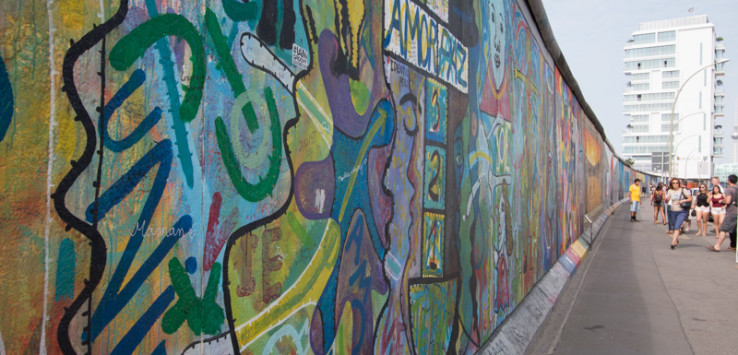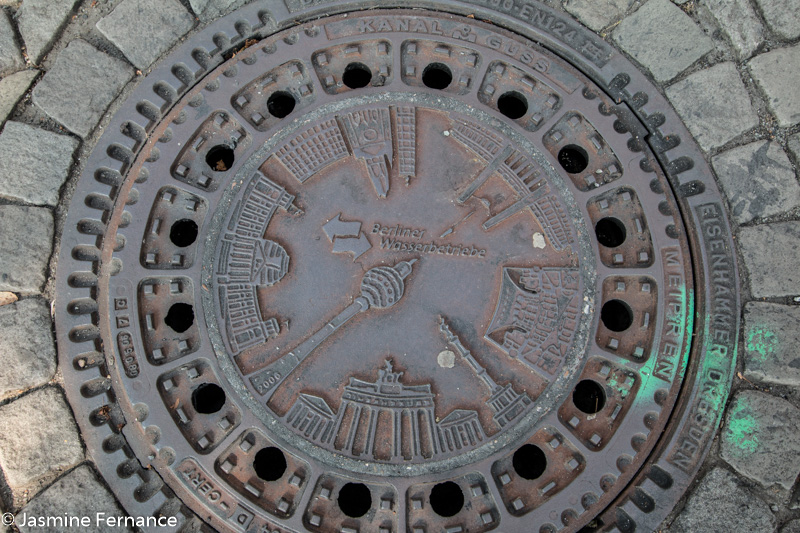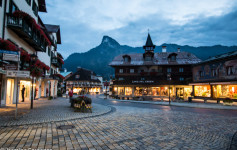On our first afternoon in Berlin we decided to go for a wander through Tiergarten, Berlin’s largest park. My mum had joined me for this part of my adventure through Europe and I had a tip from a friend on where to visit part of the Berlin Zoo for free. As we wandered past the Berlin Victory Column we took a detour down a darker pathway through the park, and out of the corner of my eye to the left I caught sight of something unexpected. A man who appeared to be naked was lying on the grass not 15 metres away, sunbathing. As I turned to Mum I suddenly realised that all the people (mostly men) in this part of the park were naked, some lying about reading, some playing volleyball, all baring their tanned butts and everything else to anyone who passed.
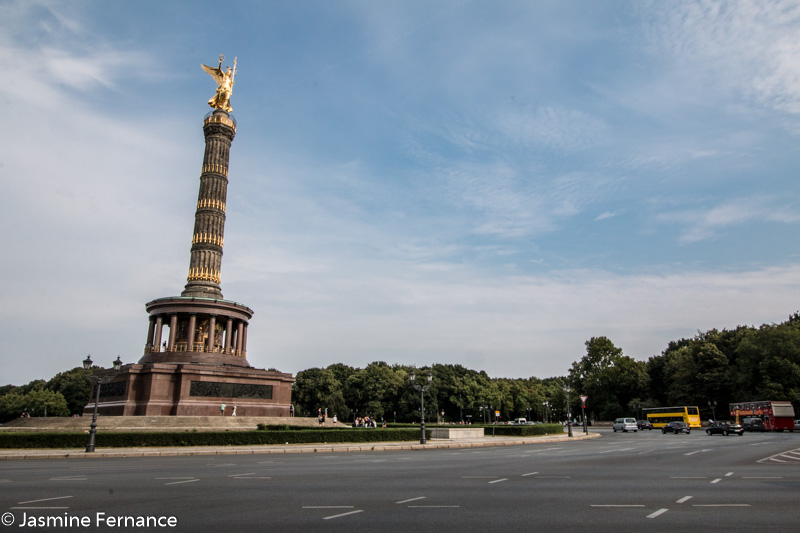
The unexpectedness of the situation had us both in a fit of giggles (sorry to the guys in the park!), and it wasn’t until later that evening when I finally started researching what to do with our time in Berlin that I found that this was a popular spot for naked sunbathing, and if I’d just done my research beforehand I wouldn’t have been so surprised (and might have headed there sooner! As mum said “there’s nothing wrong with looking”.) So in an effort to stop others making the same mistake, here are my top tips on what to do in Berlin, what to look out for, and what to avoid.
1. The Reichstag
The German parliament building is truly a sight to behold, and a wonder in architecture and innovation since being rebuilt in 1999. Gutted by fire in 1933 it again became the home of the united German government following the fall of the Berlin Wall.
A visit to the Reichstag needs to be planned in advance, because while entry is free, tickets are available for pre-arranged time-slots throughout the day, and they book out weeks in advance. We had an early morning 9am entry time which was great for avoiding queues and crowds, and we were able to enjoy our visit peacefully.
The self-guided audio tour talks you through the various buildings and monuments that can be seen across the 360 degree view of Berlin as you wind your way up the dome. The Reichstag dome is a modern masterpiece of architecture with natural light shining through to the parliament floor below, and a large sun shield tracking the movement of the sun electronically.
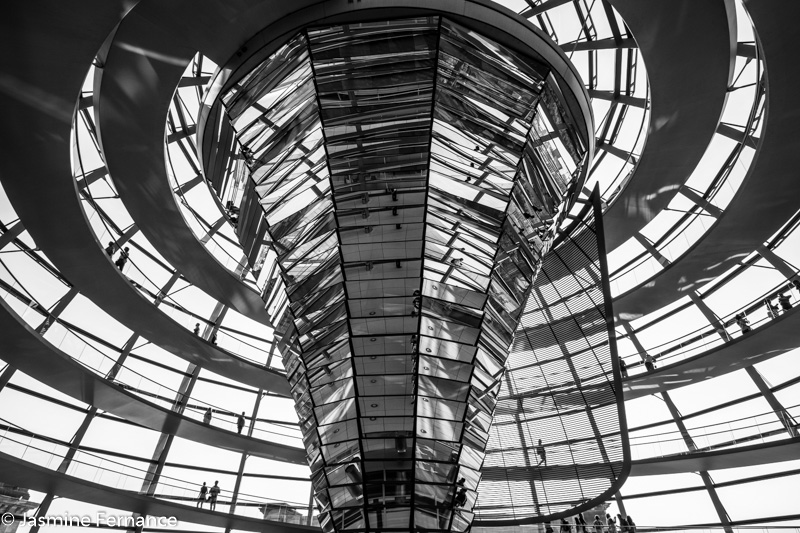
2. Brandenburg Gate
An instantly recognisable icon of Berlin, the Brandenburg Gate is best visited at night when it is lit against the dark, and the buskers and crowds come out to play. Built in 1788, it is located on the site of the former city gate and although damaged during WWII was restored by 2002.
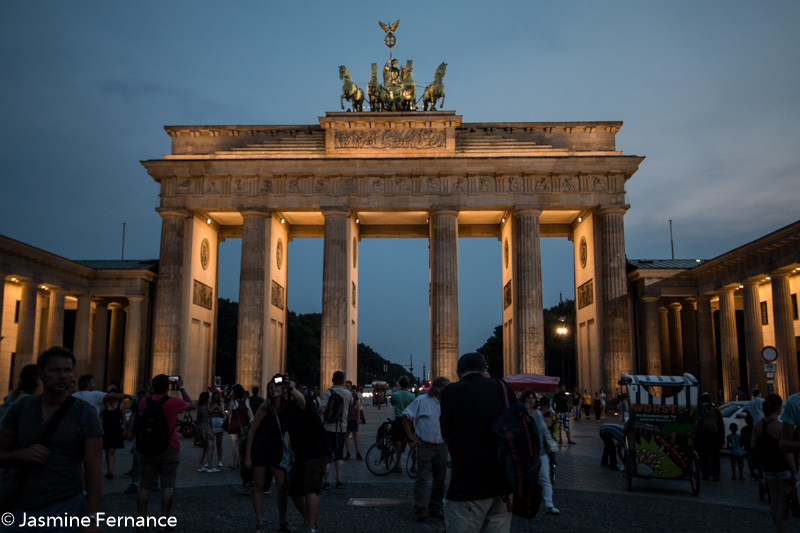
3. Museum Island
Museum Island is so named for the five state museums of Berlin that sit on the northern half of an island in the Spree River in Berlin. Added to the UNESCO World Heritage List in 1999, there is a museum here for everyone’s tastes and interests. At the time of my visit there was a LOT of construction going on in the area, with new buildings going up nearby, and old buildings covered in scaffolding. While it would have been nice to see the museums in all of their glory, a visit to the inside of the Deutsches Museum was enough to whet my appetite. With two main exhibitions focussing on the history of Germany, from the middle ages until WWI and then from 1918 to present, the Deutsches museum is comprehensive and doesn’t pull any punches when being open about the past, particularly the rise of the Nazi Party and Hitler. If you’re worn out by WWII information, then then earlier section focusing on Germany and Europe in the middle ages is worth a look.
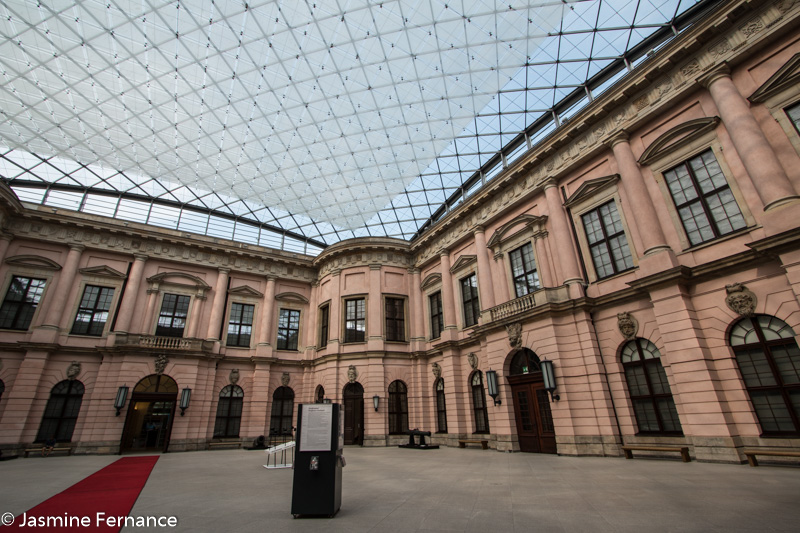
4. Berliner Dom
Berliner Dom is the largest cathedral in Berlin and is located on Museum Island. A truly beautiful piece of architecture, it was built in 1905. Berliner Dom is not actually a cathedral (as it has never been the seat of a Bishop) and a walk up the 270 steps to the outer walkway of the dome provides views over Museum Island.
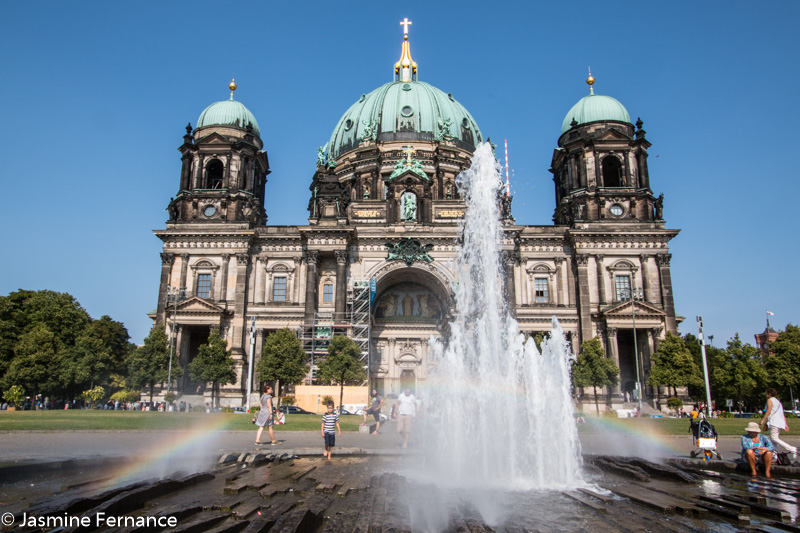
5. Memorial to the Murdered Jews of Europe
The Holocaust memorial was designed by architect Peter Eisenman and engineer Buro Happold and built in 2004, as a constant reminder of the atrocities perpetrated during WWII. Located a 5 minute walk from the Brandenburg Gate, it is a stark monument that evokes the feeling of being in a cemetery, and as you slowly wander in the walls soon tower high above, in a maze of tomb like slabs.
There are several other memorials nearby remembering, amongst others, the Gypsy and Homosexual victims of the Nazi regime.
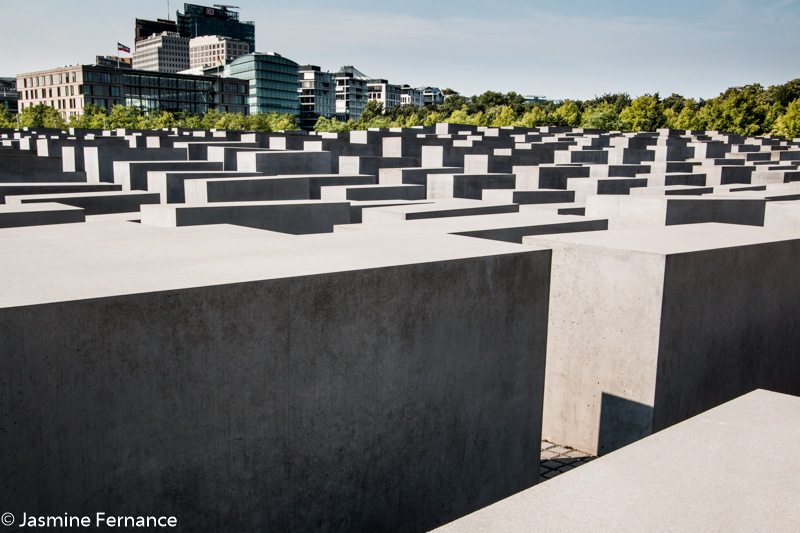
6. Checkpoint Charlie
Checkpoint Charlie is a total tourist trap. Men in American Military uniform pose for photos (for a fee) in front of the reconstructed checkpoint building. Tourists line up, pay, and salute with the ‘soldiers’ for probably the most unauthentic experience Berlin has to offer. If you want a photo of the site without the crowds and the actors, just take a photo from the back.
The Checkpoint Charlie area is still worth visiting though for the Black Box Museum and the Panorama.
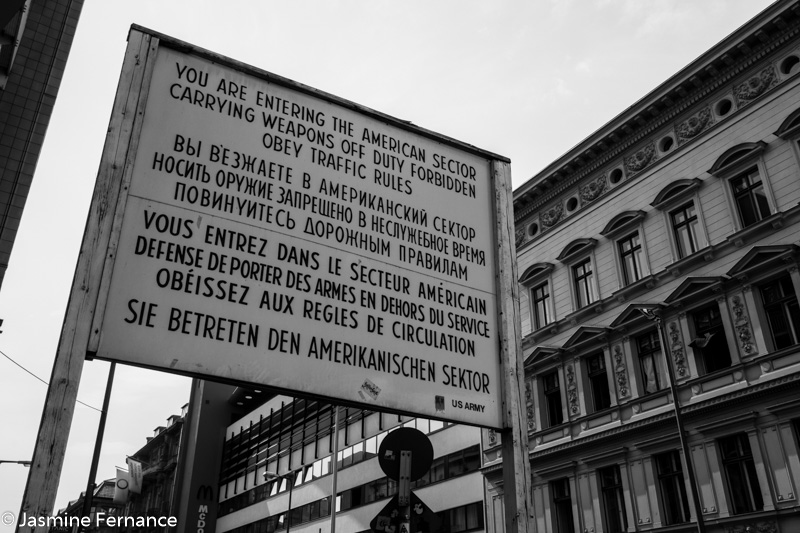
The Black Box Museum is a small museum detailing the history of the Cold War and is highly interactive, with memorabilia of the rise and fall of the Berlin Wall showcased next to genuine video of the events from 1961 to 1989, audio of iconic speeches from the likes of JFK. The timeline detailing the most important and relevant events of the era helps give a clear picture of how Berlin survived during this era.
The Asisi Panorama is an atmospheric photographic representation of what the Berlin Wall was like, for both sides, in a particular neighbourhood, with corresponding audio and lighting to set the scene. In addition, the entry room is filled with photos and quotes from regular people as they reminisced both on the wall going up, and also coming down, and how it affected the lives of them, their families and their friends. All in all a riveting experience.
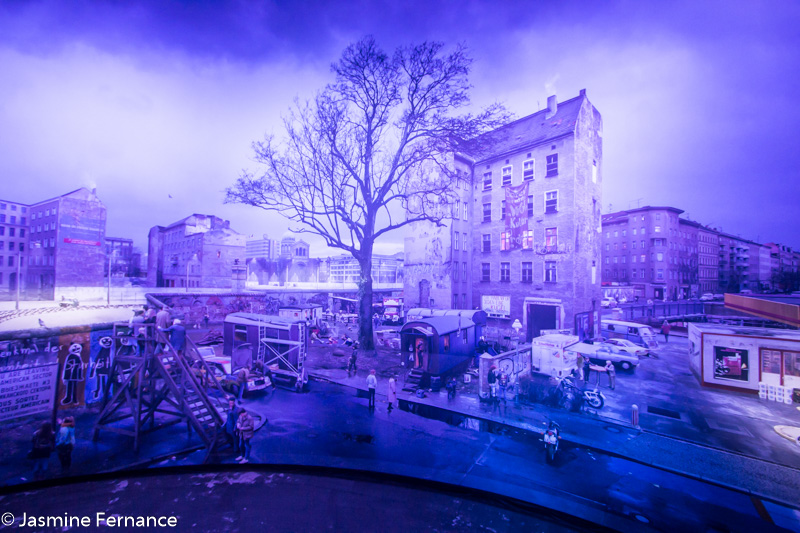
7. East Side Gallery
The East Side Gallery is the longest remaining section of the Berlin Wall, and now a symbol of hope and freedom. The 1.3km length is covered in murals and artworks depicting the emotions and thoughts of the artists at the time, and it is worth taking a couple of hours to slowly wander along and truly take in meaning behind these paintings.
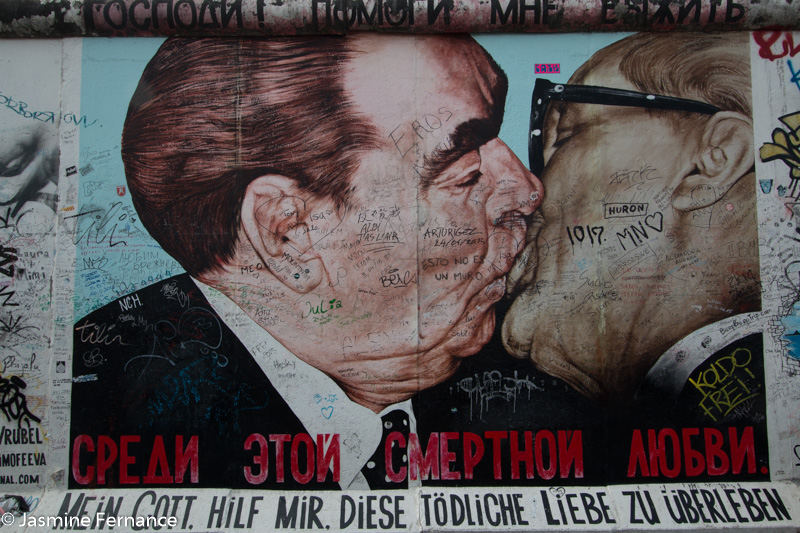
Unfortunately the wall is under threat, from two directions. Development around the area resulted in a six metre chunk being knocked down in 2013 to make way for high-rise luxury apartments, and further development is on its way. Also, tourists just can’t help but put their own mark on the wall, so that the world knows “Bob was here”. Surely a photo would be enough to memorialise the occasion, but graffiti seems to be the expression of choice. It’s such a shame to see these amazing artworks being defaced.
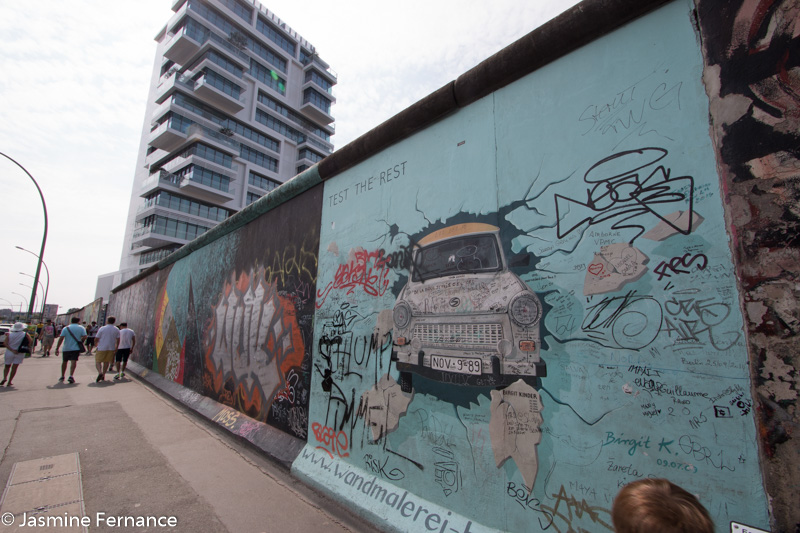
8. Sony Centre
Potsdamer Platz was an empty shell when the Berlin Wall came down in 1989, having been a virtual no-man’s-land during the division of the city and where most buildings had been destroyed during WWII. Following the re-unification of the city the focus was again on this large square, and by the year 2000 the Sony Centre was completed, a bustling business and entertainment hub in the middle of the city. Make sure you’re here at night to see the ever changing colours on the fan shaped roof and to enjoy dinner and beer at the many restaurants on offer.
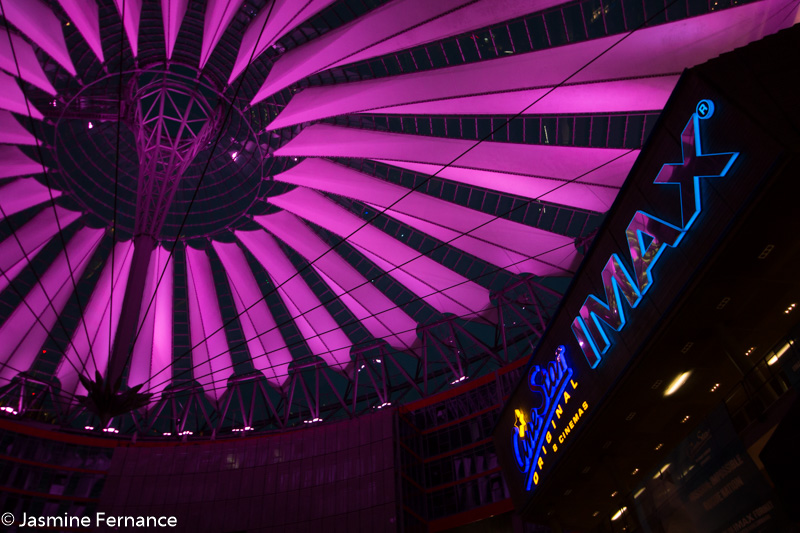
9. Shopping
For an unusual shopping experience, head to Bikini Berlin. Described as a concept shopping mall, the highlight is the rooftop terrace that overlooks the monkey enclosure of the Berlin Zoo. Watch the baboons romp about, preening and cleaning and playing. If you’re lucky, as we were, you might even be able to glimpse the gorillas in their enclosure a little further back.
For your regular shopping the area around Alexanderplatz is the place to head.

10. History of the German Parliament – Night light show along the Spree River
During the summer months visitors are able to view a stunning sound and light show along the banks of the Spree River, on the walls of the Marie-Elisabeth Lüders Building parliament building. Showcasing the history of the German parliament, the show was informative and quite spectacular, and crowds gathered early to get a good position. If this continues into the future it is something not to be missed.
